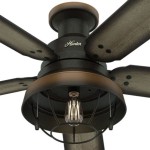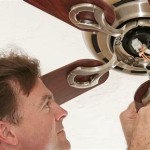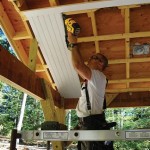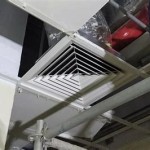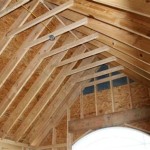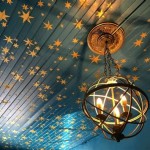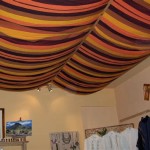Can You Add a Light Kit to Any Ceiling Fan?
The question of whether a light kit can be added to any ceiling fan is a common one for homeowners looking to improve the functionality and aesthetics of their living spaces. The answer, however, is not a simple yes or no. While many ceiling fans are designed to accommodate light kits, certain factors determine compatibility and feasibility. Understanding these factors is crucial before attempting to install a light kit on an existing ceiling fan.
The initial consideration revolves around the fan's design and intended purpose. Some ceiling fans are manufactured without the provision for a light kit, meaning they lack the necessary wiring and structural support. Others are specifically designed to accept a light kit, offering pre-wired connections and a designated mounting point. Determining the original design intent of the fan is the first step in evaluating whether a light kit can be successfully added.
Furthermore, safety regulations and electrical codes play a significant role. Any modification to an electrical appliance must adhere to local building codes and safety standards to prevent potential hazards. Improperly installed light kits can lead to electrical shorts, fire risks, and voided warranties. Therefore, a thorough understanding of electrical wiring and safety protocols is essential before commencing any installation project.
Evaluating Ceiling Fan Compatibility
The compatibility of a ceiling fan with a light kit hinges on several key factors. The first, and perhaps most crucial, is the presence of a pre-wired connection. Many ceiling fans come with a dedicated wire harness specifically for light kits. This harness typically consists of two or three wires: a hot wire (usually black or red), a neutral wire (usually white), and a ground wire (usually green or bare copper). If the fan lacks this wiring, adding a light kit becomes significantly more complex, often requiring rewiring the fan motor and potentially voiding the warranty.
Next, the physical design of the fan must be considered. Ceiling fans designed for light kits have a designated mounting area, often a circular or rectangular plate, at the bottom of the fan housing. This plate provides a stable and secure platform for attaching the light kit. Fans without this feature may require modification to create a suitable mounting point, which can be challenging and potentially compromise the fan's structural integrity. The structural integrity of the fan housing is paramount to ensure that added weight doesn't cause the fan to fail.
Moreover, the fan's electrical capacity must be sufficient to handle the additional load of the light kit. Adding a light kit increases the overall power consumption of the fan. The fan motor's specifications, typically found on a label on the motor housing, indicate the maximum wattage it can handle. Exceeding this limit can overload the motor, leading to overheating and potential failure. It is crucial to select a light kit with a wattage rating that falls within the fan's specified range.
Another consideration is the fan's remote control system, if applicable. Some ceiling fans integrate the light kit control into the remote, allowing for independent operation of the fan and light. Adding a light kit to a fan without this capability may require installing a separate wall switch or a third-party remote control system to manage the light. Ensuring compatibility between the light kit and the existing or planned control system is vital for seamless operation.
Finally, the style and size of the light kit should be compatible with the ceiling fan's overall design. A light kit that is disproportionately large or stylistically mismatched can detract from the fan's aesthetic appeal. Selecting a light kit that complements the fan's design and scale is essential for achieving a cohesive and visually pleasing result.
Addressing Installation Challenges
Even if a ceiling fan appears to be compatible with a light kit, certain installation challenges may arise. One common issue is the availability of compatible light kits. Older ceiling fan models may have proprietary mounting systems that are no longer supported by manufacturers. Finding a light kit that fits the fan's specific mounting configuration can be difficult, potentially requiring custom modifications or the use of adapters.
Wiring discrepancies can also pose a challenge. Even if the fan has pre-wired connections, the wire colors or configurations may not match those of the light kit. Consulting the fan's and light kit's instruction manuals is critical for correctly identifying the wires and ensuring proper connections. If the wiring is unclear, consulting a qualified electrician is highly recommended.
Another potential obstacle is the lack of adequate clearance. The light kit must have sufficient clearance from the ceiling and surrounding objects to prevent overheating and ensure proper ventilation. Low ceilings or obstructions such as beams or soffits may limit the size and type of light kit that can be installed. Measuring the available space and selecting a light kit that fits within those dimensions is essential.
In some cases, adding a light kit may require additional hardware, such as extension rods or mounting brackets. These components may be necessary to lower the light kit to a more appropriate height or to provide a secure mounting surface. Sourcing the correct hardware and ensuring its compatibility with the fan and light kit is crucial for a successful installation.
Furthermore, the installation process itself can be complex and time-consuming, particularly for individuals with limited electrical experience. Improperly installed light kits can pose significant safety hazards, including electrical shock and fire risks. If unsure about any aspect of the installation process, seeking professional assistance from a qualified electrician is always the safest option.
Alternatives to Adding a Light Kit
In situations where adding a light kit to an existing ceiling fan proves impractical or unsafe, alternative solutions may be considered. One option is to replace the entire ceiling fan with a new model that includes an integrated light kit. This approach offers several advantages, including guaranteed compatibility, modern features, and updated aesthetics. Choosing a new fan with the desired lighting capabilities eliminates the complexities and risks associated with retrofitting an existing fan.
Another alternative is to supplement the ceiling fan with additional lighting fixtures. This can involve installing recessed lighting in the ceiling, adding floor lamps to the room, or using table lamps to provide ambient lighting. By strategically placing these additional light sources, the overall illumination of the room can be improved without modifying the ceiling fan.
Track lighting is yet another alternative that offers flexibility and directional lighting. Track lighting systems consist of a series of lights mounted on a track, allowing for adjustable positioning and targeted illumination. This option can be particularly useful for highlighting specific areas of the room or for providing task lighting in workspaces.
Finally, upgrading existing light bulbs to brighter or more energy-efficient options can also improve the overall lighting without requiring any modifications to the ceiling fan. Switching to LED bulbs, for example, can significantly increase the brightness while reducing energy consumption and extending bulb lifespan.
Ultimately, the decision of whether or not to add a light kit to a ceiling fan depends on a careful assessment of the fan's compatibility, the installer's skill level, and the availability of alternative lighting solutions. Prioritizing safety and adhering to electrical codes are paramount throughout the process.

Can You Add A Light Fixture To Ceiling Fan Rings World The Local Business Directory For Small And Large Businesses

How To Install A Ceiling Fan Light Kit Shockley Electric

How To Replace A Ceiling Fan Light Kit Smafan Com

Ceiling Fan Light Kit Installation How To

How To Add A Light Kit Your Ceiling Fan Mr Electric

How To Install A Light On Ceiling Fan 11 Steps

How To Install A Light On Ceiling Fan 11 Steps

Add A Drum Shade To Ceiling Fan In Minutes Thrifty Decor Diy And Organizing

How To Install A Light On Ceiling Fan 11 Steps

How To Install A Ceiling Fan Light Kit
Related Posts

